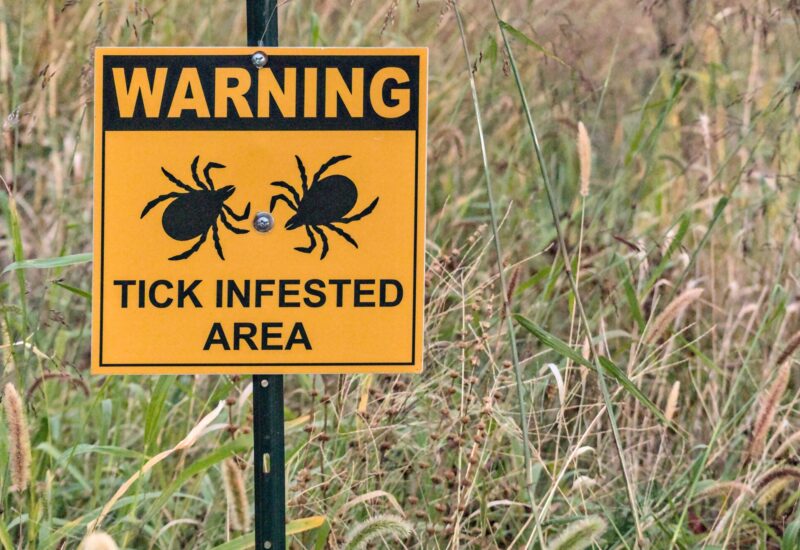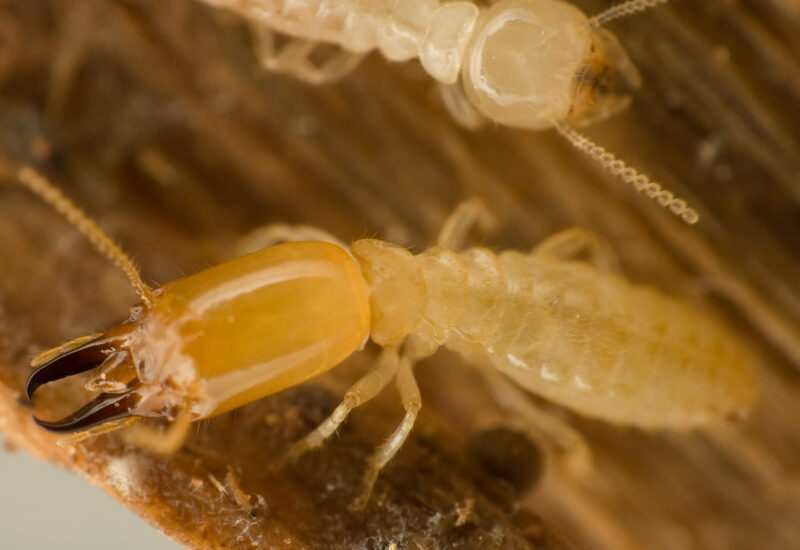Inside the Hive: Identifying a Paper Wasp Nest

Paper wasps get a bad rap to some extent. Although they do pack a painful sting, these six-legged insects can play a surprisingly beneficial role in gardens. First, they occasionally feed on nectar, which aids in pollination. Additionally, paper wasps often prey on other nuisance insects in the garden, including beetle larvae, flies, and caterpillars.
Paper wasps typically have brownish bodies with yellow or red markings that can be muted or vibrant in color, depending on the species. They look similar to thinner-waisted yellow jackets but have less colorful bodies that grow anywhere from 5/8 to 3/4 inch in size.
Knowing what the insects look like is important, but it also helps to know what does a paper wasp nest look like? Being able to identify nests is critical to understanding which insects you are dealing with and how to proceed.
As the region’s go-to company for professional pest control, Catseye Pest Control understands how unnerving it can be to find wasp nests on your property. Let’s explore the unique characteristics of paper wasp nests so you can identify them if these insects move onto your property.
Introduction to Paper Wasp Nests
Now that you know a bit more about the paper wasp, let’s take a closer look at these insects’ unique nests. It’s vital to be aware of what to look for when identifying them. Many people inadvertently get too close and end up on the wrong end of a protective paper wasp’s stinger.
Characteristics of Paper Wasp Nests
The paper wasp’s nest can vary depending on the species. Single-comb nests don’t have a covering and can range from just a few cells to up to 400 cells or more. Paper wasp nests look like inverted umbrellas hanging from sheltered surfaces like structural voids and the underside of leaves. The exterior of the nest looks very similar to paper, which is how these wasps earned the “paper wasp” name.
Paper Wasp Nest Characteristics at a Glance:
- Uncovered with multiple cells
- Shaped like an inverted umbrella
- Papery, gray exterior
- Hang in sheltered areas

Construction of Paper Wasp Nests
Mated females choose a nesting site and then find wood sources nearby. Females scrape wood fibers from sources like fences, cardboard, trees, and logs using powerful jaws. Once mixed with their saliva, the wood fibers start breaking down to create the soft, papery pulp they use to construct their nests. Workers will aid the queen in creating hexagon-shaped cells, adding more cells as the colony grows. As the pulp dries, it takes on its characteristic paper-like appearance.
Identifying Paper Wasp Nests in Your Home
As discussed, the nests themselves have unique characteristics. You might also see paper wasps flying around the area. You can identify these wasps from other species based on their elongated second sections in their abdomens and longer second and third pairs of legs. You might find new nests as spring warms up and mated females start building their nests to lay eggs. Interestingly, female paper wasps also reuse nests from year-to-year.
Paper wasps build their nests in protected areas like door and window frames, porch ceilings, shrubbery and tree branches, and attic rafters. You may also find them in spots like chimneys, under attic rafters, roof overhangs, and under railings, joists, porches, and decks. Paper wasps have also built nests inside open-ended pipes, birdhouses, unused umbrellas and grill covers, and inside the bumpers of abandoned vehicles.
FAQs About Paper Wasp Nests
You have pest questions, and Catseye has answers. Take a look at some of the most frequent questions people have about paper wasp nests below. If you don’t see yours, feel free to contact Catseye for prompt assistance.
What Should I Do If I Find a Paper Wasp Nest?
If the nest is small, such as no bigger than about the size of a quarter, then the female probably hasn’t laid her eggs yet. Small nests like these can be removed relatively easily at night when the wasps aren’t active. However, if the nest is in an out-of-the-way location, you might consider leaving it alone. These wasps can help control other outdoor pests.
Are Paper Wasps Aggressive?
Paper wasps won’t go out of their way to sting you. However, if they feel threatened or believe the nest is threatened, they can retaliate by delivering some painful stings. In many cases, paper wasps will first deliver a warning that you’re too close to the nest by flying into you.

Can Paper Wasps Damage Property?
Although they are not as vigorous as carpenter ants and termites and their damage is minimal, paper wasps can scrape wood from homes, railings, porches, decks, and fences. The damage won’t be structural in nature, but it can hinder the aesthetic appeal of a property.
How Can I Get Rid of Paper Wasps?
You can try to eliminate small nests on your own, but you should wear thick clothing to protect yourself. Try using methods like insecticides designed for wasp control that you can spray directly on the nest. Avoid using a flashlight, which could attract other wasps and stand as far away from the nest as possible. Large nests located in areas frequented by people and pets require professional removal for optimal safety.
When to Call a Professional to Remove a Paper Wasp Nest
Paper wasps play a beneficial role in the garden. Professionals can help weigh the options and ensure the removal is handled safely. Never try to remove large nests on your own. Instead, contact the experts at Catseye, who can deftly handle large nests and those located in spots where people and pets could inadvertently disturb them.
Don’t let paper wasps interfere with your outdoor fun. Schedule a free inspection with Catseye for a full property assessment and tips to keep yourself and those you care about safe all season long.






